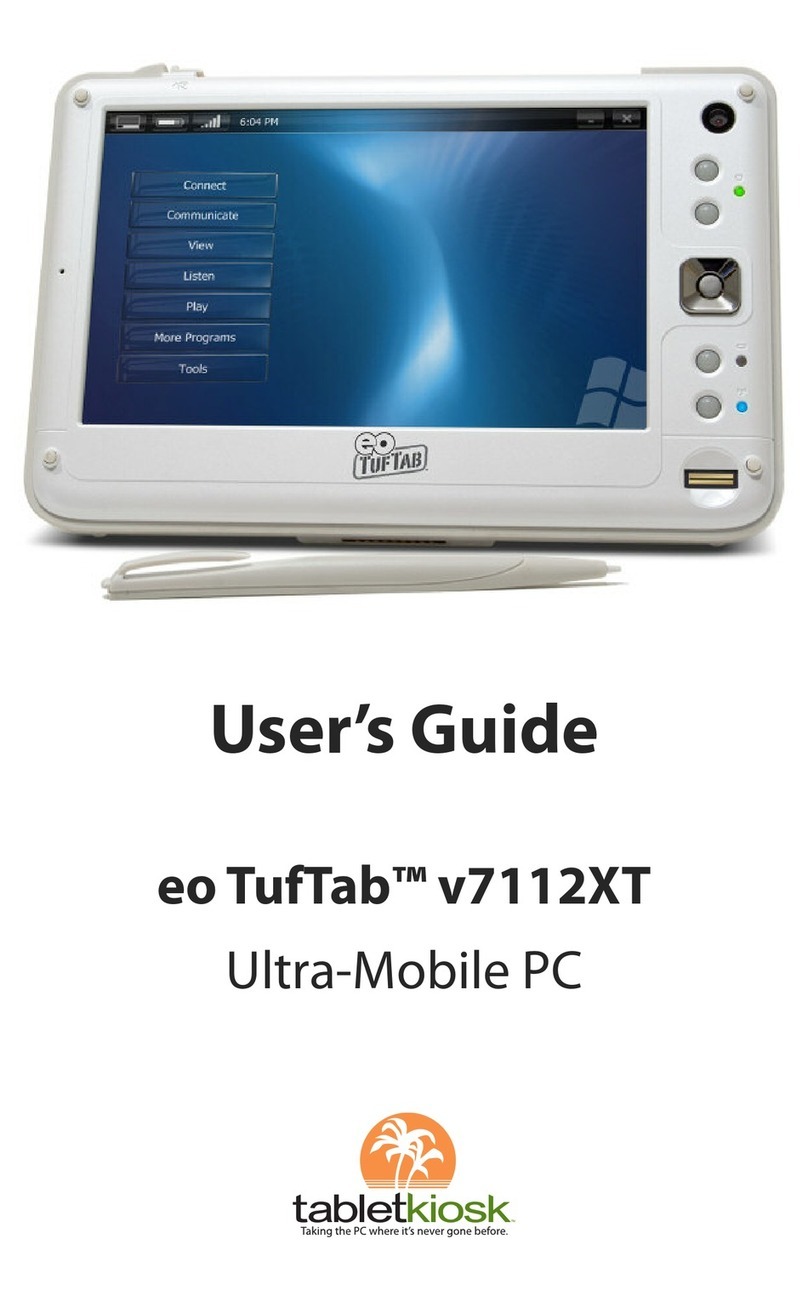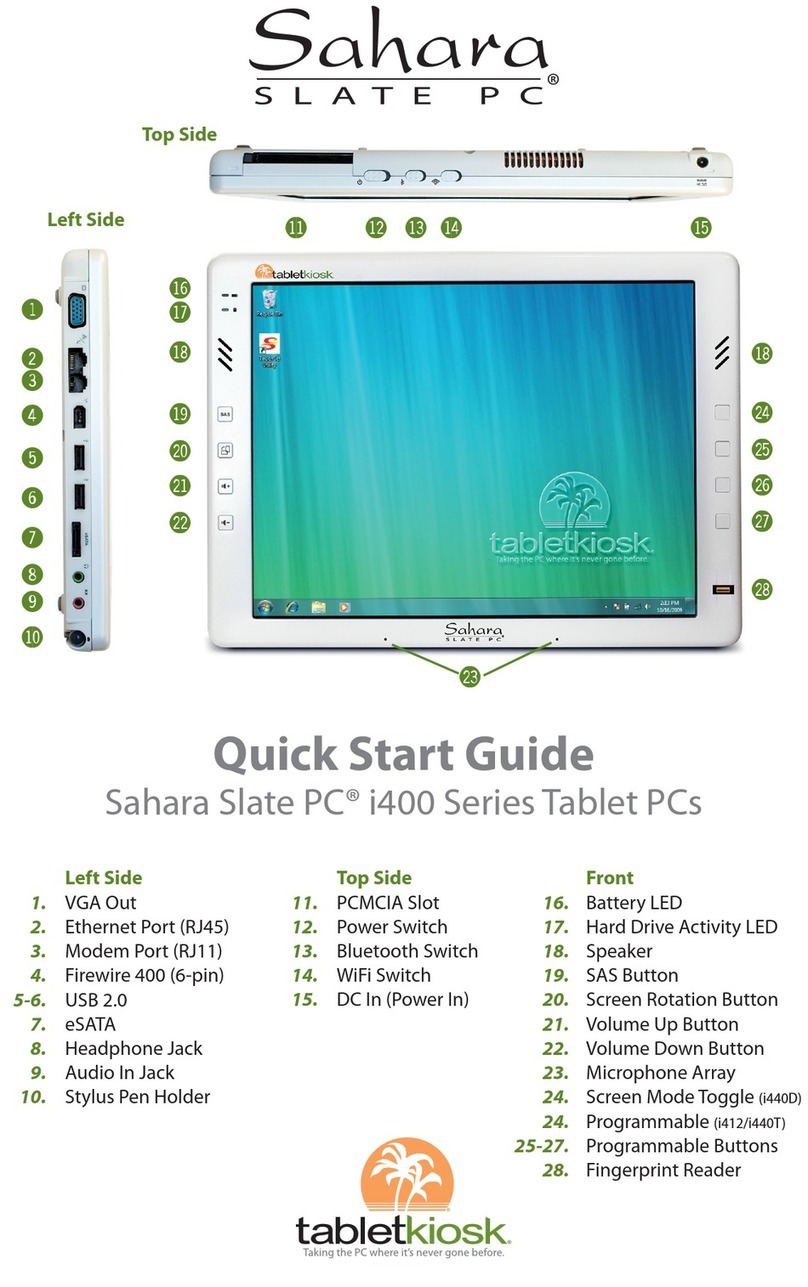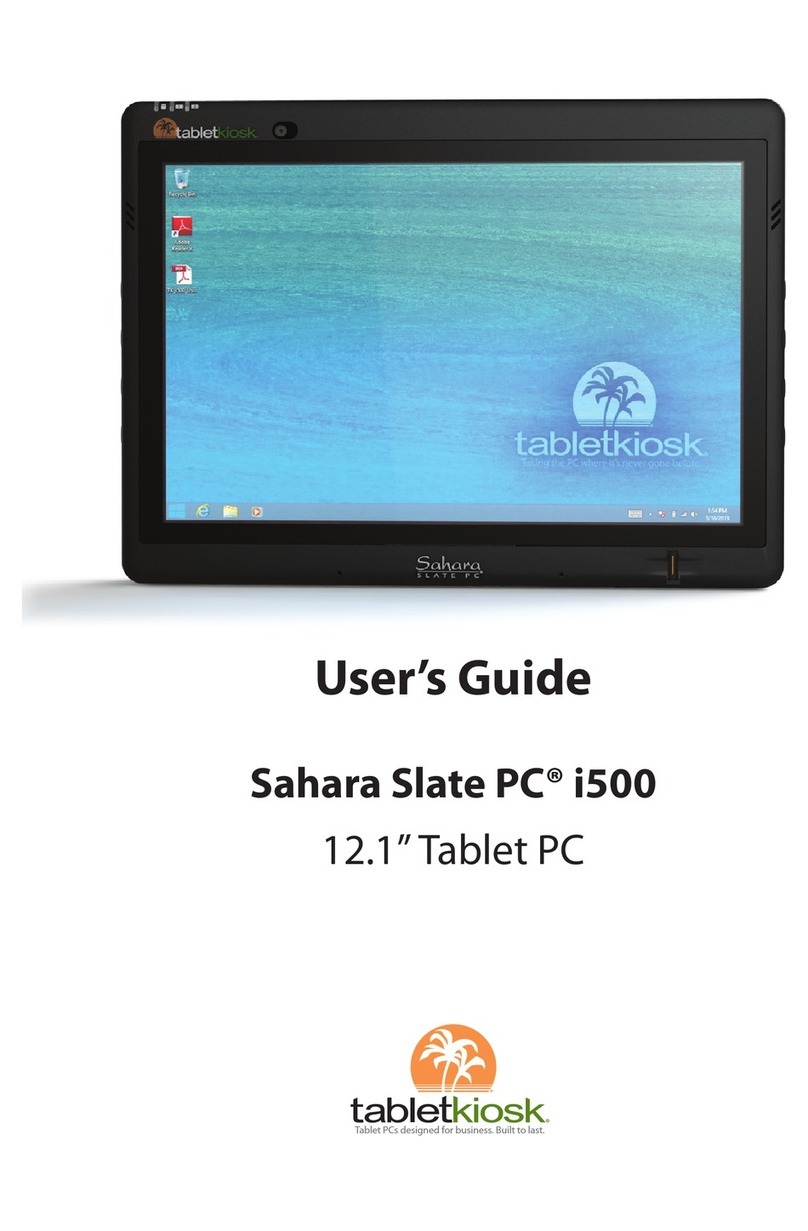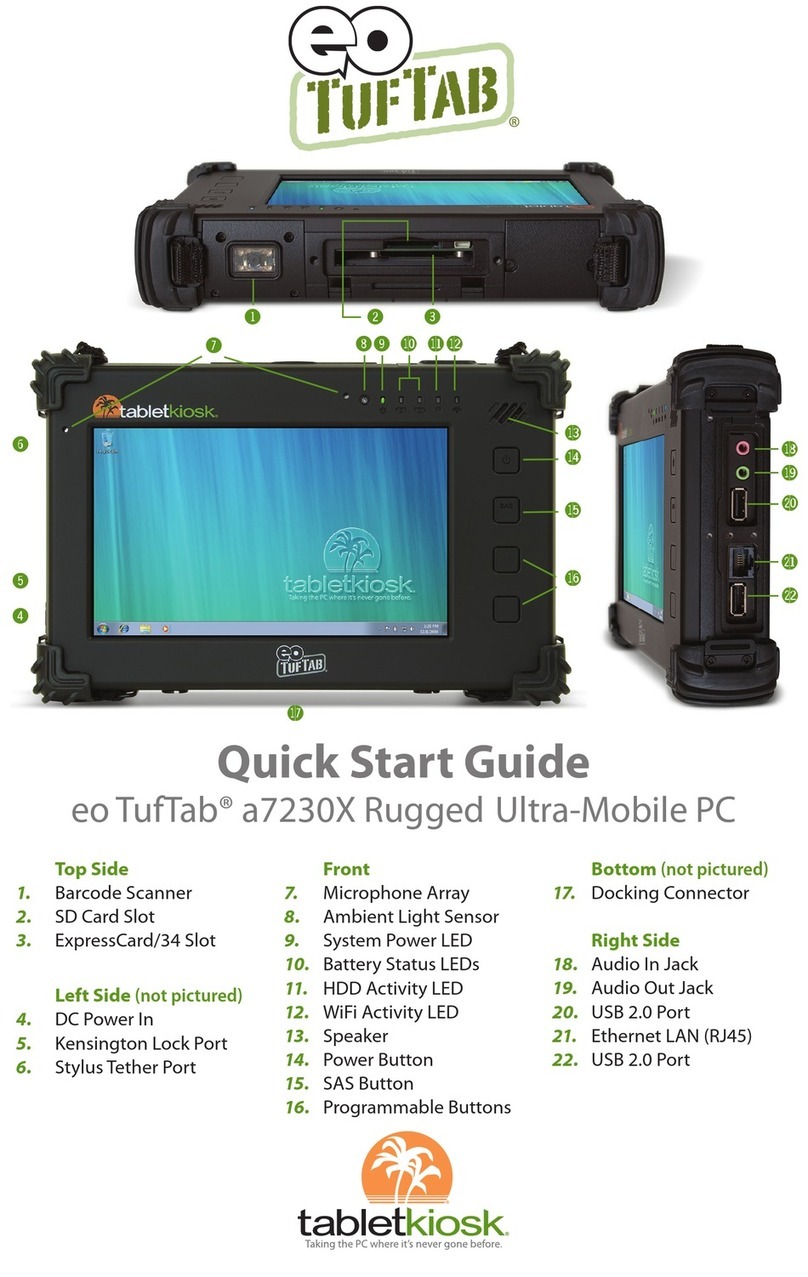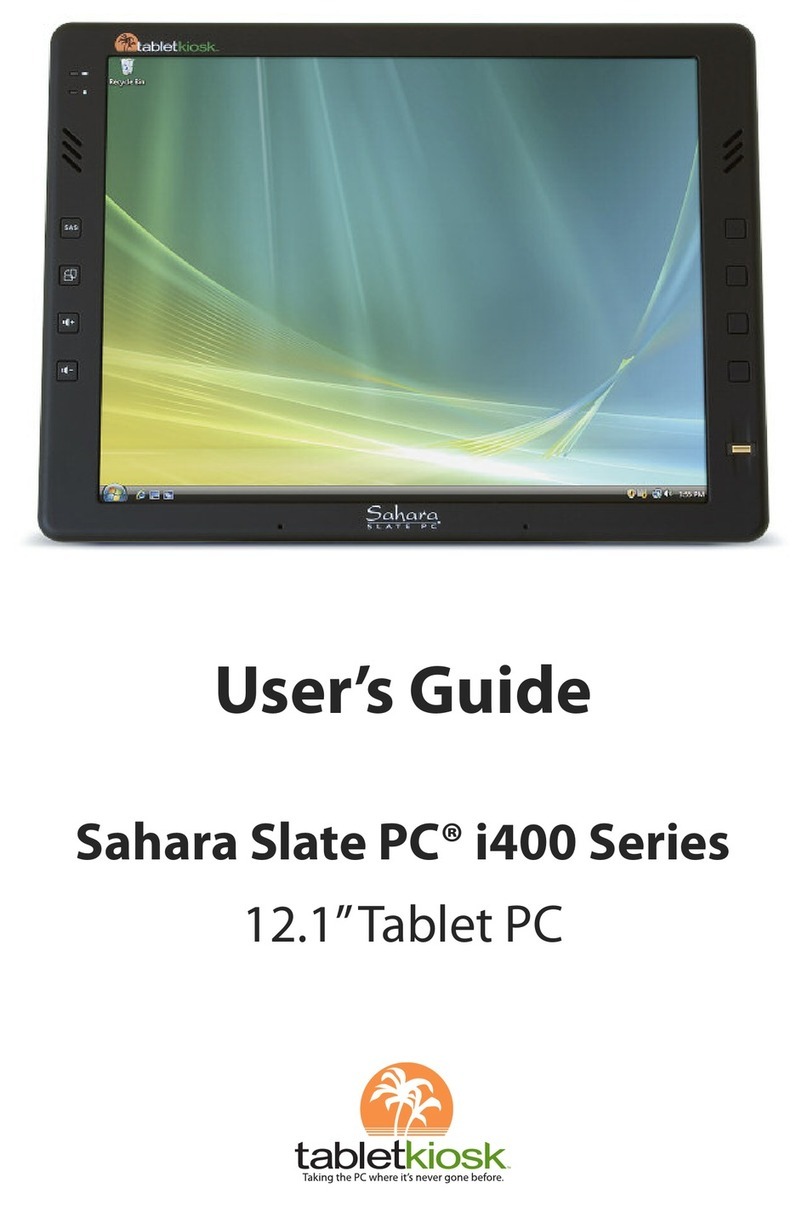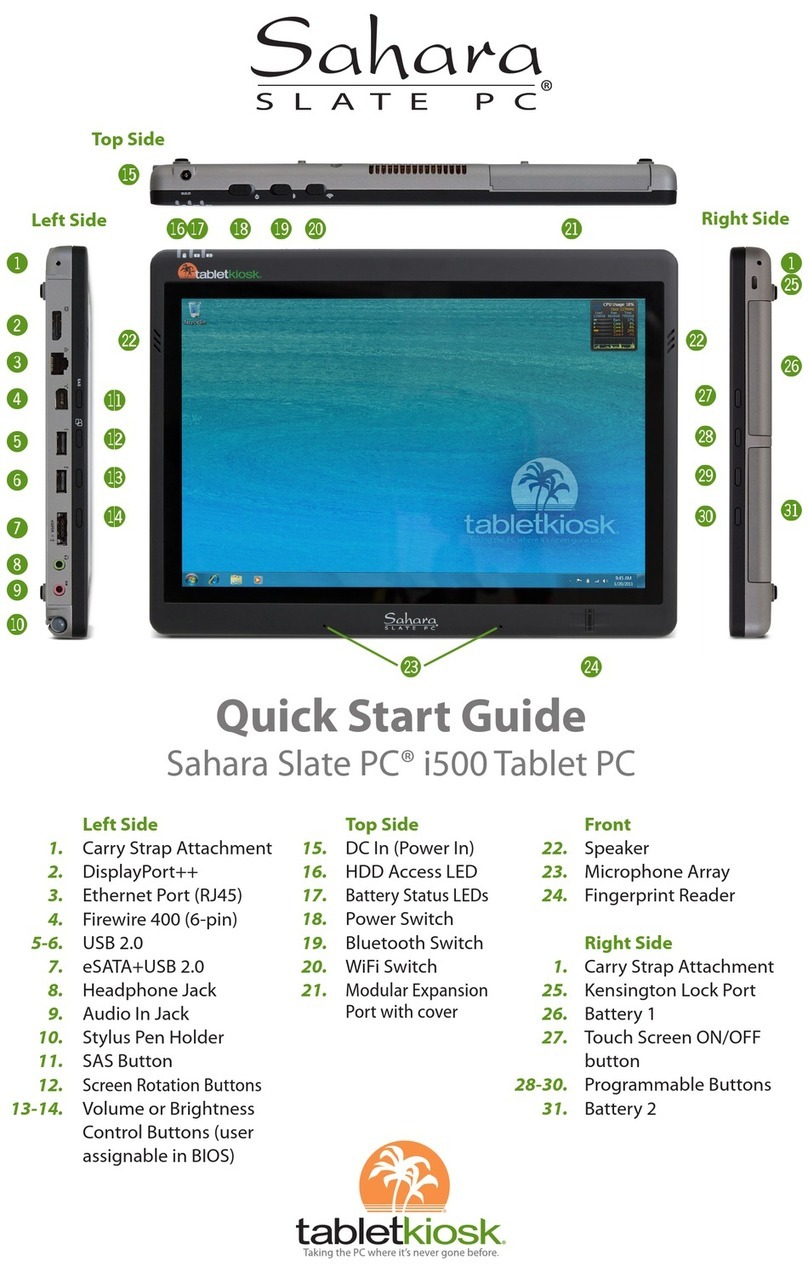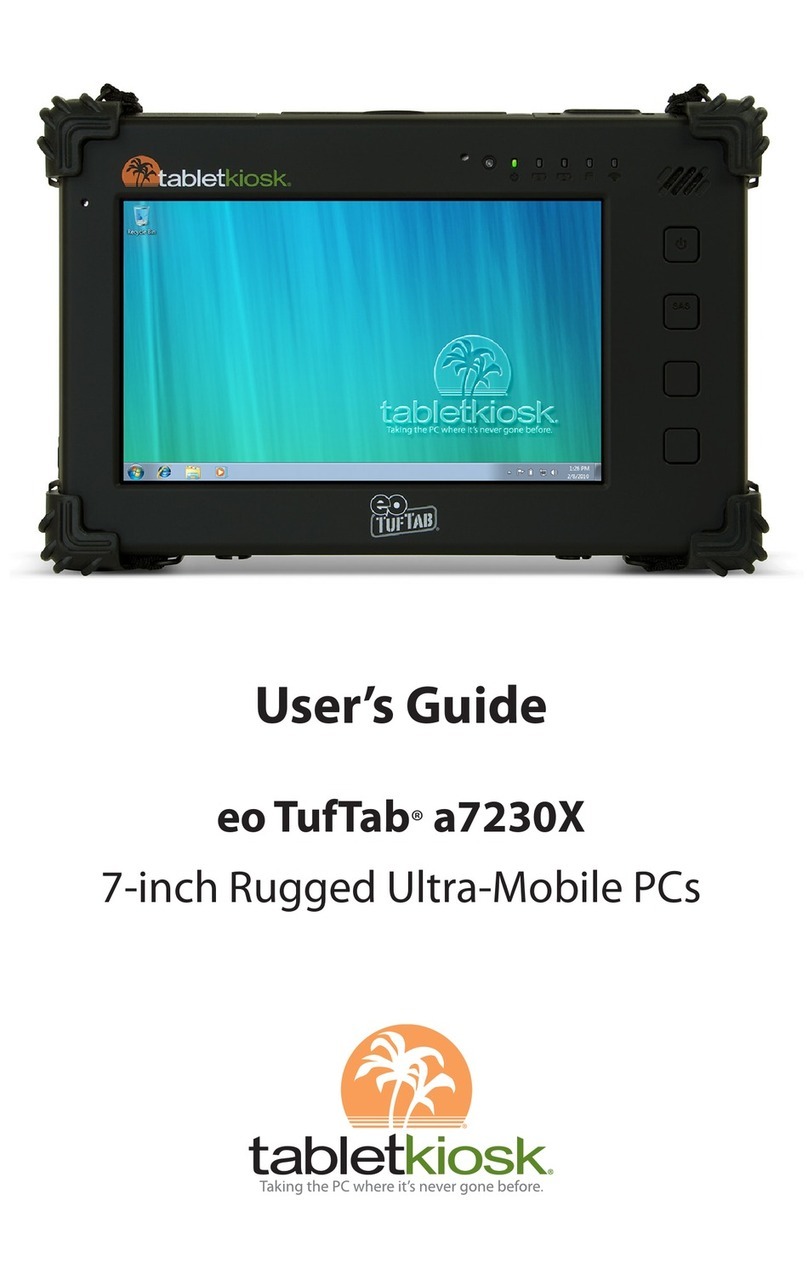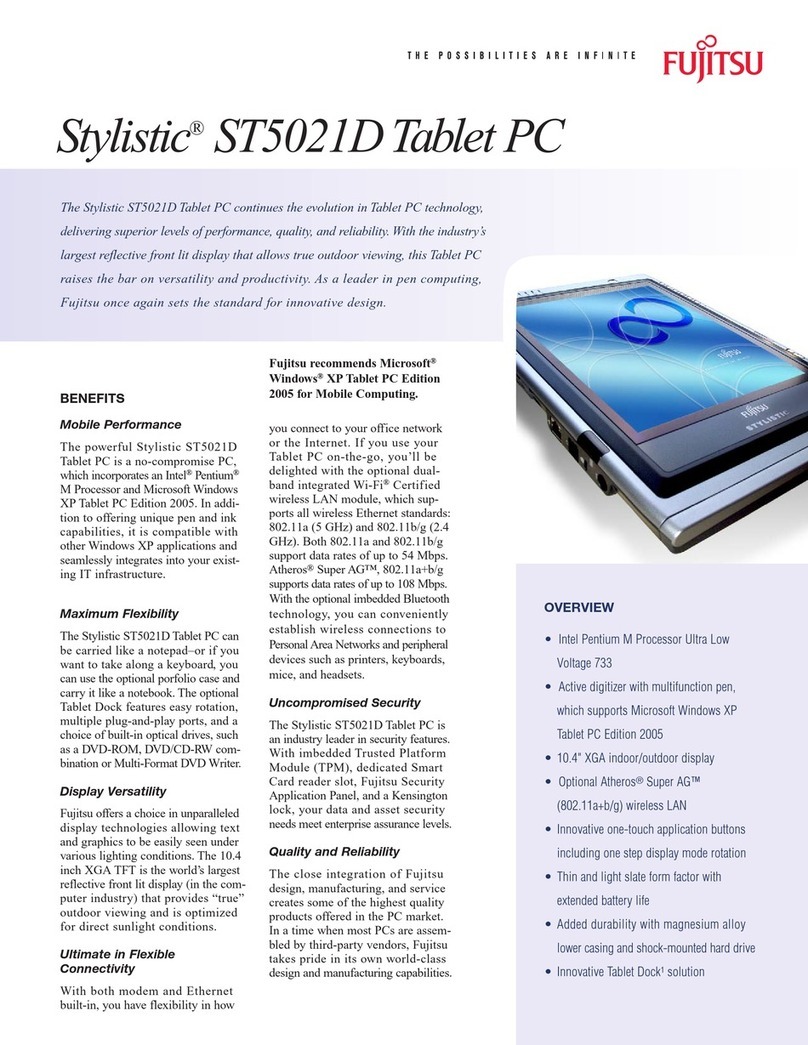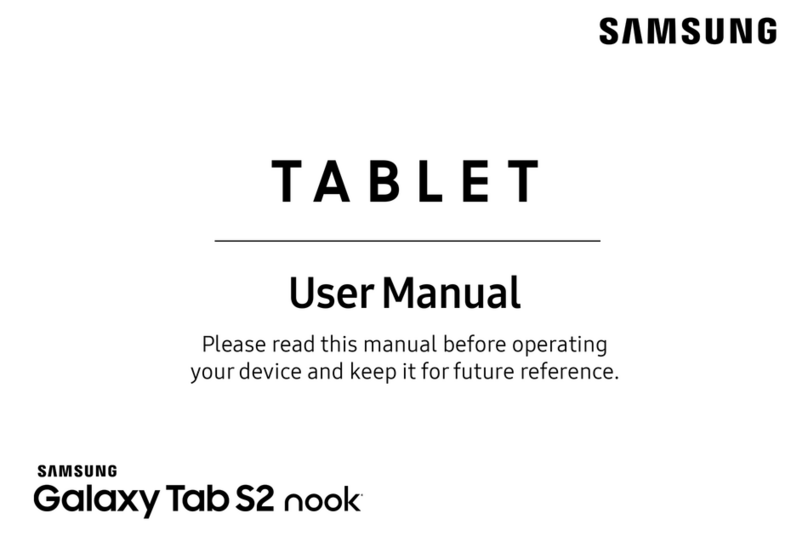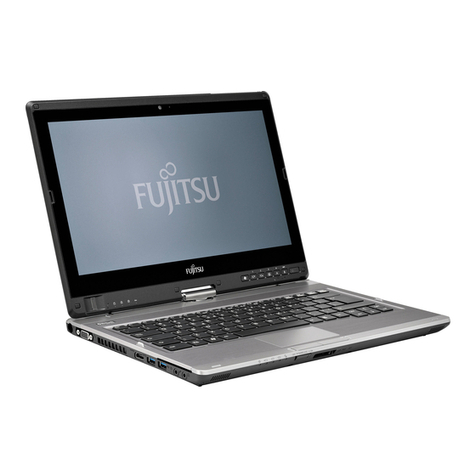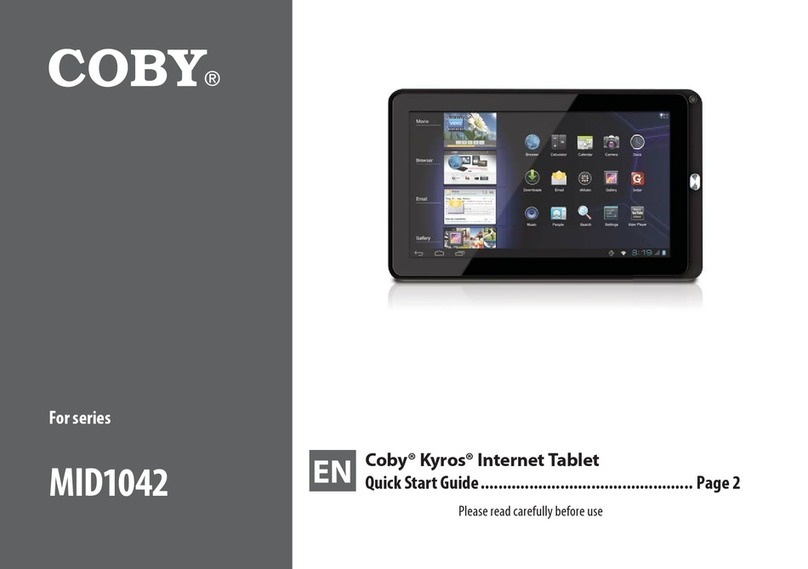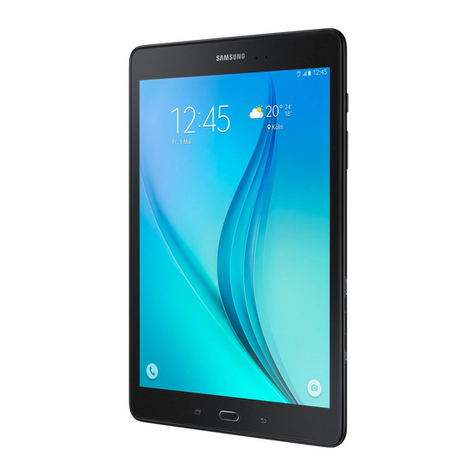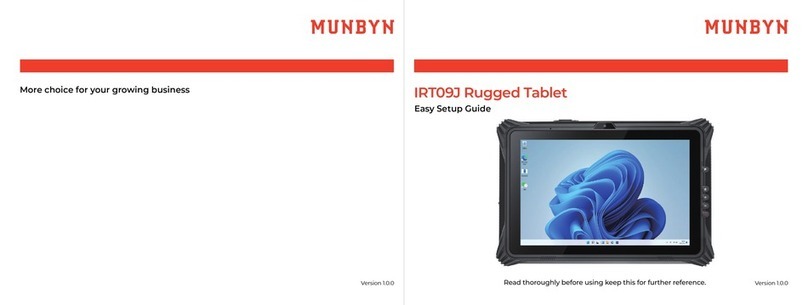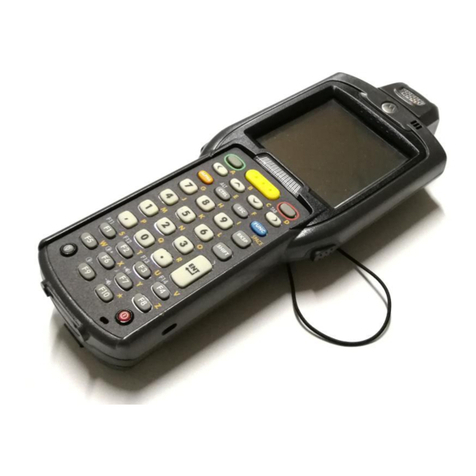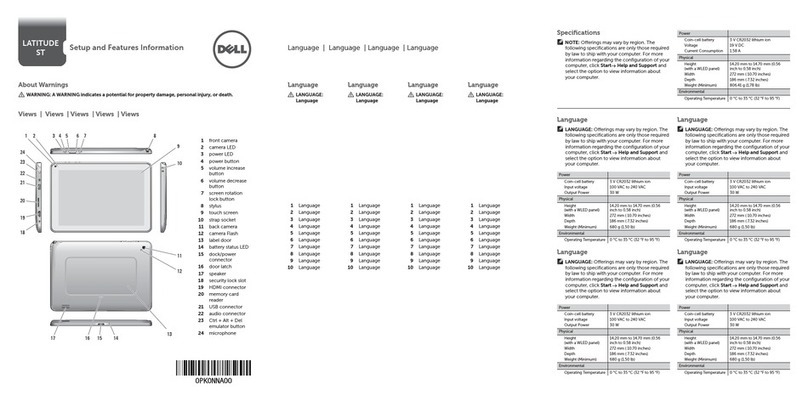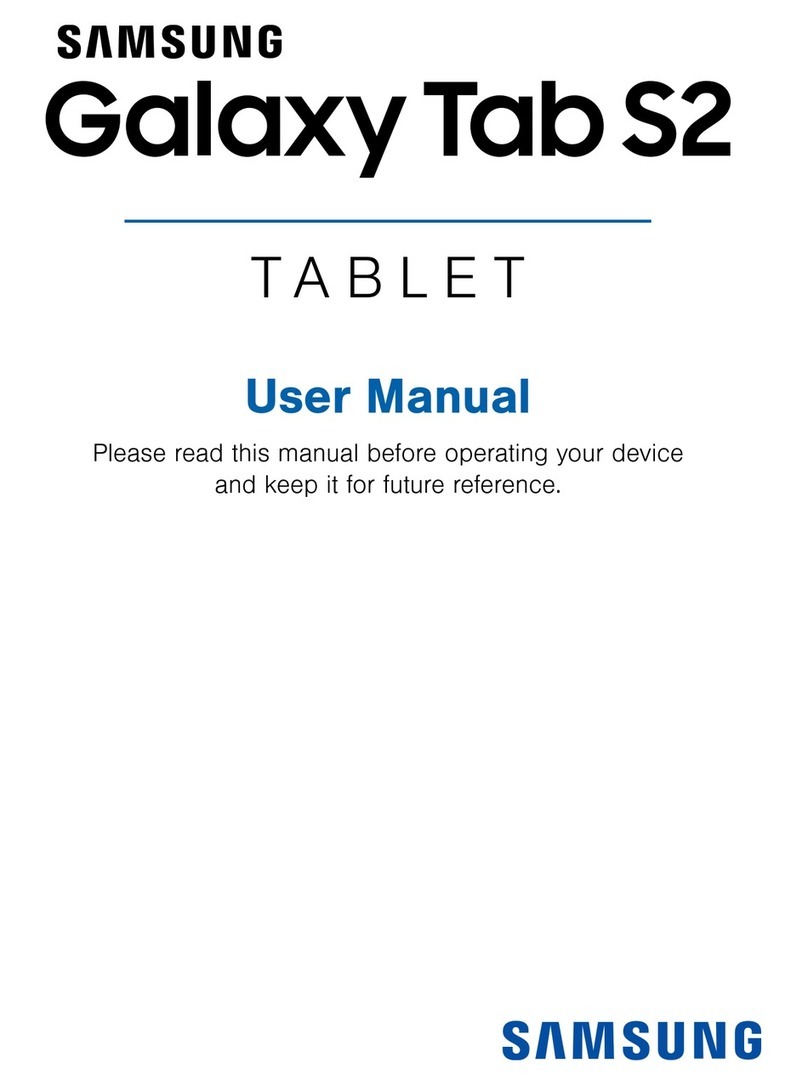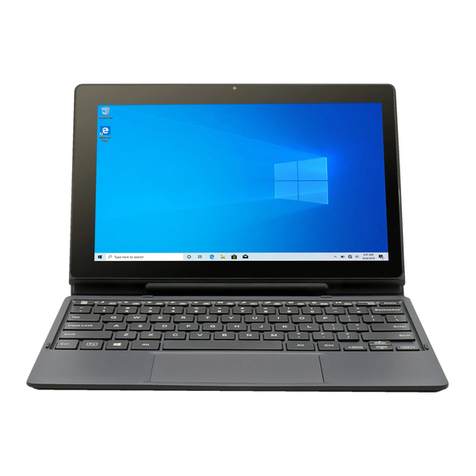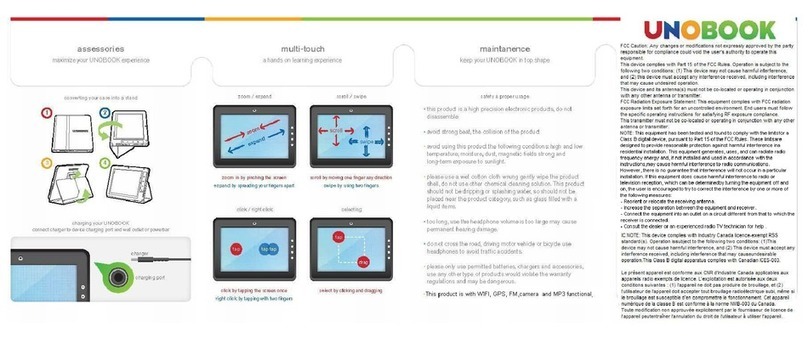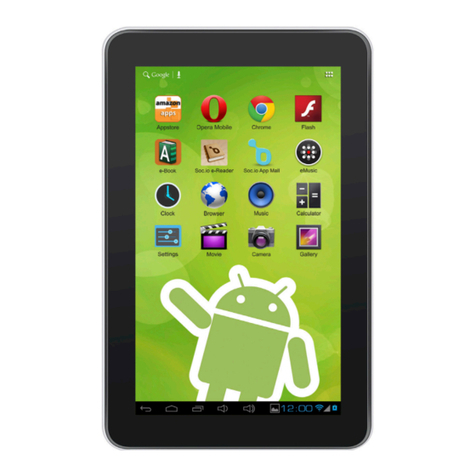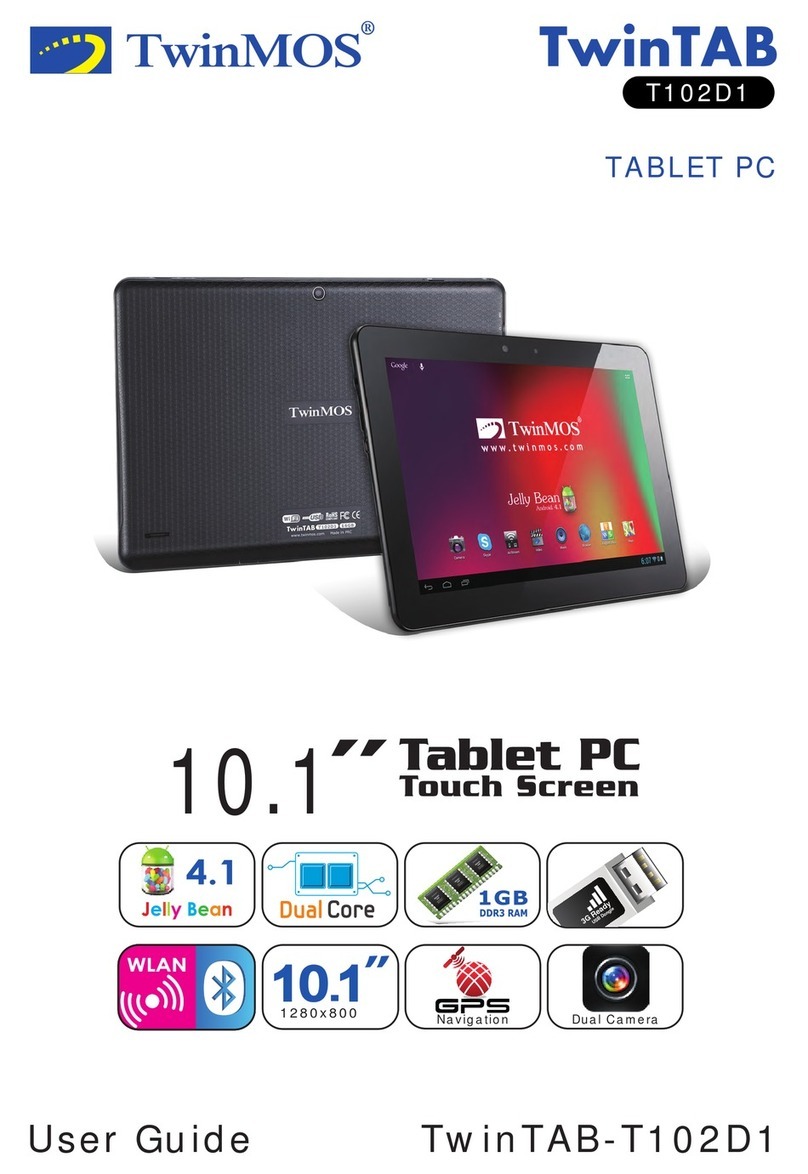ii Preface
Disclaimer
The specifications and information in this manual are subject
to change without prior notice in order to improve reliability,
design and/or function. In no way does this represent a com-
mitment on the part of the manufacturer. The manufacturer
assumes no responsibility for errors or omissions in this
document.
In no event will the manufacturer be liable for direct, indirect,
special, incidental, or consequential damages arising from the
use, or inability to use, the Tablet PC or this documentation, even
if advised of the possibility of such damages.
This document contains proprietary information protected by
copyright laws. All rights are reserved. No part of this manual
may be reproduced by any mechanical, electronic, or other
means in any form without prior written permission of TabletKiosk.
If you have any questions regarding the Sahara NetSlate, or
the information contained within this manual, please contact
TabletKiosk at info@tabletkiosk.com.
Important Safety Instructions
For your own safety and the safety of your equipment, please
follow these rules for the handling and care of your Sahara
NetSlate. Keep this User’s Manual for future reference by you and
other users.
Never use sprays, liquids or cleaning detergents to clean the
Sahara NetSlate. Use a micro fiber cloth to clean the touch
screen. Avoid the use of tissue paper since tissue fibers can easily
lodge between the touch screen and the top cover of the tablet.
Never pour liquids into any opening or directly on the Sahara
NetSlate. This could result in fire or electrical shock.
Check that the voltage range of the power outlet is between
100V and 240V before connecting the Sahara NetSlate. Exceed-
